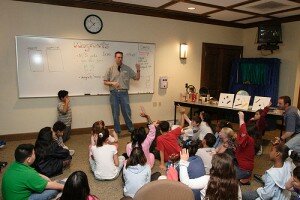 We discuss the skills gap on the blog fairly often, and that’s because the shortage of skilled workers to fill manufacturing positions across the country is a tremendously important inhibitor to manufacturing growth.
We discuss the skills gap on the blog fairly often, and that’s because the shortage of skilled workers to fill manufacturing positions across the country is a tremendously important inhibitor to manufacturing growth.
However, there’s another skills gap that isn’t discussed as frequently, and that is the teacher skills gap. As programs to develop the number of students in STEM-oriented careers grows, there needs to be a matching growth in the number of teachers to work with these students.
, state director for career education with the Nebraska Department of Education, vocational education suffers from this issue: “One of our largest issues in career education in the state is the availability of qualified teachers. In particular, we have severe shortages in skilled and technical sciences, or what used to be called industrial technology or industrial education. Those areas like automotive, building constructions, welding. I think we had about 15 schools this year that could not find a teacher.”
On one hand, this is a good problem to have. It means that more students are taking concentrated STEM classes than in the past. However, those classes simply won’t be possible without teachers. Jason Suttor, principal of Beatrice High School, told this week that the school will be beginning the year without an industrial arts teacher: “You don’t get as many applications that come in for those positions as you do for say, a social studies or physical education or even an English type of position,” Suttor says.
The tricky part is that if you believe in the power of STEM to change America’s future, and the necessity of consistently recruiting students and adults to work in STEM, this isn’t a problem where the country can throw their hands in the air and say, “Well, there’s nothing we can do about it.” It means, however, a shift in mindset: Instead of focusing solely on student recruitment, Nebraskans must also focus on teacher recruitment.
The explains that there are misconceptions about being a STEM or vocational teacher, just as there are about working in factories or manufacturing. Julie Kantor says that “the first misconception is that being a STEM teacher and a STEM innovator are mutually exclusive. While teachers may not be in a laboratory every day, they are absolutely spearheading innovations that will move our country forward.” Part of inviting brilliant minds and innovators to train the next generation requires bringing back the glory, and the excitement to the classroom. Many STEM educators also pioneer cutting-edge research in both their field, and in education.
This is also an area in which the state or government can play a part. In Nebraska, the Attracting Excellence to Teaching Program “provides forgivable loans to eligible students who agree to complete a teacher education program at an eligible institution.” Priorities for loans are for students who are majoring in subject shortage areas, almost always mathematics and science.” Other departments across the country are also working to create incentives and motivation for education majors to fill the open positions in teaching fields: You can check out a full list of recruitment efforts .
If you’re a teacher interested in working with career or vocational education, there are fifteen jobs in Nebraska that simply weren’t filled this year, so it is a field rife with opportunity.
—
photo credit: via
 Official Nebraska Government Website
Official Nebraska Government Website
